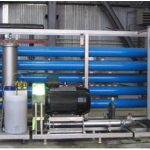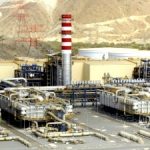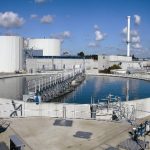Sea Water Desalination
Seawater Desalination
The size of dirt particles contained in sea water varies widely. Therefore sea water filtration needs more care than other fluids. A very special filtration solution is required to remove particles from 10 mm at one end of the spectrum down to 50 micron particles at the other. It requires filtration of both coarse and fine particles at the same time.
Nowadays, desalination has become a very affordable solution to cope with fresh water shortage typically in tropical as well as of off-shore areas. Seawater desalination is an increasingly key solution for the scarcity of water Seawater covers 71% of the planet surface and represents 97% of the world’s water. With more than 40 years of experience, technologies and knowledge in desalination, Royalstar Water Technologies supports municipalities and industries around the world in the implementation of their seawater desalination strategies.
- Açıklama
- Değerlendirmeler (0)
Açıklama
Our all-encompassing range of water treatment solutions and seawater desalination technologies are dedicated optimize the management of the water resources. Combined with local presence and a worldwide network of experts, we ensure our clients the best possible solutions to supply high quality water, manage brine concentrates, produce or recover energy, extract raw materials and capitalize on by-products.
The desalination core process is based on Reverse Osmosis Membrane technology, but stand alone, it doesn’t provide safe drinking water, nor does it guarantee an efficient plant.
The pretreatment includes all the necessary treatment step ahead of the reverse osmosis plant. It is determining for plant life time and to minimize chemical cleaning and membrane replacement. It has a direct impact on the plant performance.
There are as many membrane types as applications. They range from “high rejection” to “ultra-low energy” or ” high boron rejection”.
The reverse osmosis process can also be built with one or two passes, depending on the product water requirements and the seawater salinity and temperature. In most cases, 1 pass is sufficient to reach the EU drinking water standards, specially regarding the boron content (1 mg/L). To reach WHO boron guideline (0.5mg/L), a second pass might be necessary (Boron removal process)
The energy recovery device is the key factor that determines the plant electrical costs. It must be chosen carefully based on the local energy costs and environment policies.
Brine disposal can be an environmental and economic issue in some areas where the fauna and flora are sensitive to local seawater salinity increase. Brine disposal should be studied and engineered case by case.
The art of desalination is to determine and combine available technologies to optimize water production costs and quality.
To adapt our Desalination Plants to your local needs, we offer containerized mobile units from Intake to Distribution up to a production capacity of 200 m3/h of desalinated water.
All type of water can be produced from a desalination plant:
– WHO or EU drinking water
– Irrigation water
– Process water: boiler feed water, cooling water
– Demi or Ultrapure water
All type of natural seawater source can be treated
– Shallow Surface seawater
– Deep seawater
– Brackish river water
– Beach well seawater










Değerlendirmeler
Henüz değerlendirme yapılmadı.